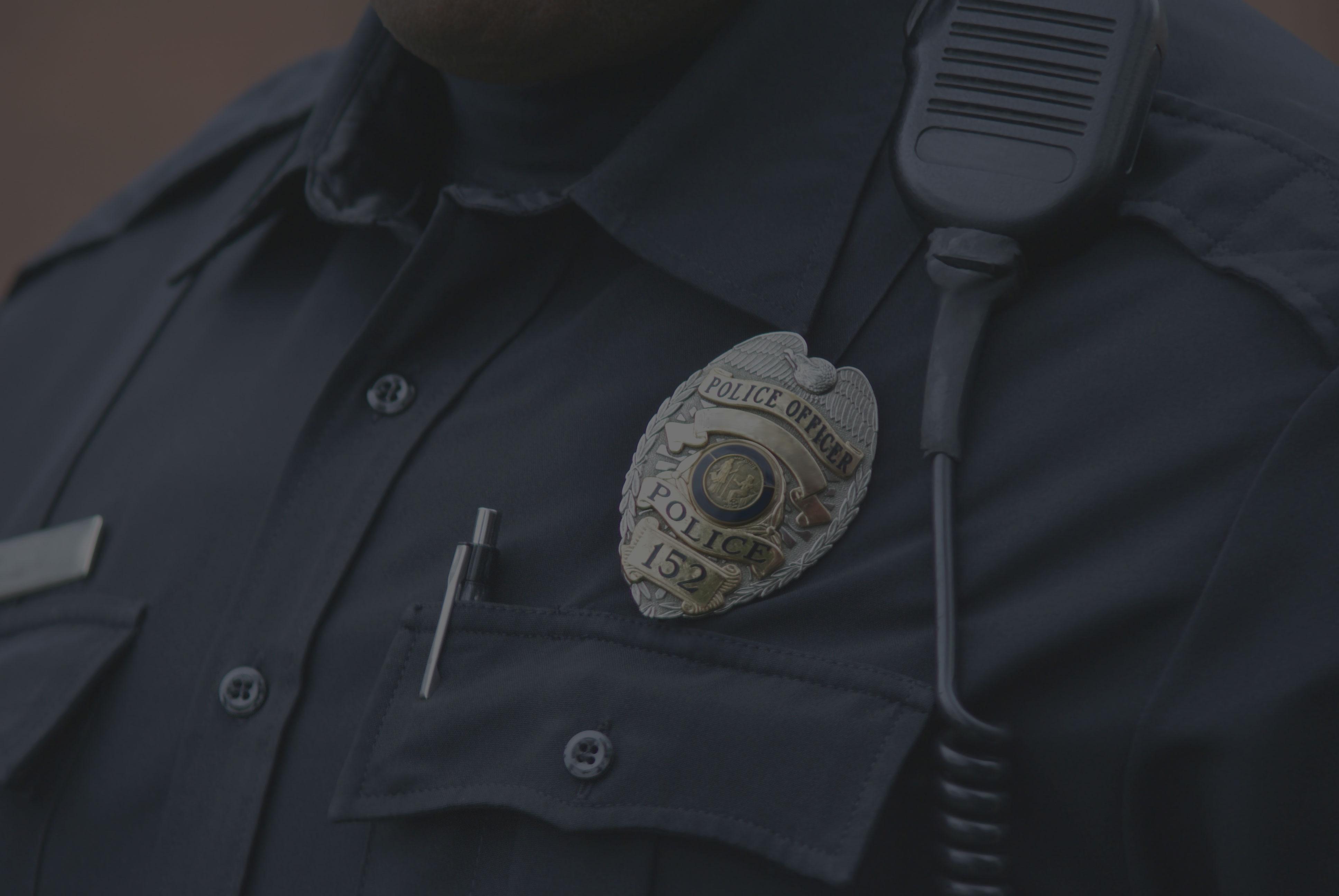CASE STUDY
San Bernardino mass shooting
Heroes are not defined by a job description. They neither report for work in superhero costumes nor plan their day around superhuman acts. They are everyday people who put themselves in harm's way, and help support those in harm's way, to respond to life-threatening events in a community, such as what happened in San Bernardino, California, on December 2, 2015.
That day, San Bernardino became the center of national attention as the site of a mass shooting. They joined in infamy with other cities impacted by mass shootings: Charleston, South Carolina; Columbine, Colorado; Fort Hood, Texas; and Oak Creek, Wisconsin.
Married couple Syed Rizwan Farook and Tashfeen Malik fired automatic weapons on community members at the Inland Regional Center (IRC) in San Bernardino. Fourteen people were killed in the attack and 22 others were seriously injured.
However, we will never know how many lives were saved had the community members, including law enforcement personnel, not taken quick action to end the violence.
On that Wednesday morning in December, Sergeant Gary Schuelke of the San Bernardino Police Department (SBPD) and his narcotics investigation unit were on surveillance duty in Los Angeles when they got word of the mass shooting. Daani Svonkin, then an asset forfeiture analyst for the SBPD, while monitoring Schuelke's surveillance, heard a triple-tone alert relaying information of an active shooter in the city.
Earlier that morning, employees of the San Bernardino health department, including Farook, and a county health inspector, met at the Inland Regional Center for an event.
Regional Centers are nonprofit private corporations that contract with the California Department of Developmental Services to provide services and support to individuals with developmental disabilities. Approximately 550 people work at the IRC, which serves the counties of Riverside and San Bernardino.
Farook left the event and returned at 11 a.m. with his wife, Malik, dressed in combat gear and carrying assault rifles, and began firing upon health department employees. During the attack, a fire alarm was triggered, setting off sprinklers. Workers in nearby buildings sheltered in their offices as the carnage ensued.
Within minutes of SBPD dispatch notifying officers of the IRC incident, law enforcement personnel arrived on the scene to engage the active shooter. According to witnesses, the suspects had escaped the scene in a black SUV, allowing the police to clear the scene and evacuate the injured. During the evacuation, officers discovered an undetonated explosive device.
Once Schuelke received information that multiple people were down at the IRC, he broke his team away from surveillance in Los Angeles and started back to the city. When they arrived at the scene, there were hundreds of officers at the IRC, and evacuations of the buildings were underway and under control. Schuelke directed his team to meet at the command post and decided they would focus on locating the suspects.
According to Svonkin and Schuelke, shortly after the officers arrived at the scene, a witness came forward and informed Schuelke's son, also a police officer, that Farook had been at the function but left upset and irritated. Farook became a person of interest for Svonkin, who is an expert in finding people and assets from law enforcement and private databases, including Thomson Reuters CLEAR® records resource. She immediately went to work in CLEAR.
CLEAR brings together key content into a single, easy-to-use interface that provides fast and efficient access to a significant amount of public and proprietary records. Typically, Svonkin uses CLEAR in her narcotics investigations to locate people, assets, and businesses, as well as connecting affiliations and critical facts. She can use the resource to make connections between persons of interest to an investigation and other individuals, incidents, activities, and locations, and generate comprehensive reports.
Meanwhile, the SBPD received a report of a suspicious vehicle matching the description of the vehicle the suspects used to exit the IRC – with a Utah license plate number. Svonkin noticed that the plate number was a rental vehicle and reached out to her rental car agency contact, who faxed a rental contract back to her that matched the suspect's name. SBPD now had confirmed a primary suspect in the shooting.
Armed with a name, Svonkin returned to CLEAR and located a Redlands address, which differed from the address on the rental car contract and the address the suspect used on his driver's license and county employment application. That single unique address for an apartment in Redlands, however, was within the several-block radius of the ping from the suspect's county-owned cell phone, which the police were using in their attempt to locate the suspect. Svonkin provided Schuelke and his team with the Redlands address.
Plainclothes (undercover) police officers first arrived at the Redlands address and witnessed a black SUV with Utah plates leaving the location of the apartment. As Schuelke's team followed the vehicle, he requested that a marked police unit make an attempt to stop the SUV.
When the suspect's SUV reached the intersection of San Bernardino Avenue and Tippecanoe Avenue, it made a right-hand turn going east on San Bernardino Avenue. Within moments of the marked unit lighting up in an attempt to pull the SUV over, gunfire erupted from the SUV, which then fully stopped to further engage the officer in the marked unit. With other officers assisting, Schuelke and his team pulled over and returned fire. The suspects were killed and an officer was injured in the exchange.
While officers secured and investigated the scene, they discovered a detonation device in the SUV. The couple had been driving around the city trying to set off the explosive they left at the IRC. Had Svonkin not hastily found the suspect's address in Redlands, the couple may have continued their attack, resulting in more civilian and police casualties.
Svonkin's critical and timely research and the quick action by Schuelke and the SBPD shows how CLEAR can be used to quickly identify and locate a person of interest with just one piece of information, such as a name, address, or phone number.
Thomson Reuters CLEAR online investigation software links people and businesses to relevant addresses, business names, associates, driver's license numbers, phone numbers, Social Security numbers (SSN), and more. Besides law enforcement, CLEAR helps conduct corporate due diligence, investigate government and health care fraud, and prevent money laundering.
The CLEAR user interface allows simultaneous searches of public and proprietary databases, and the Web. Users can filter unnecessary data by date range, age, and other critical fact distinctions, and entity resolution consolidates and deduplicates search results. Like a Google search, the most relevant information to search criteria rises to the top for easy review.
You can also locate results using incomplete information, such as partial birth records, SSN, license plates, and street names. In mapping addresses to people and businesses, CLEAR provides access to underlying source documents, such as ownership records.
Content is enhanced in real time from gateways to current public and proprietary data. Information includes consumer and credit bureau data, motor vehicle registration data from 45 U.S. states, and phone data (cellular phones, VoIP, landlines, and pagers) in all 50 states, Puerto Rico and other U.S. territories, and Canada. The data includes reverse lookup and caller ID databases, with carrier contact information for subpoena purposes.
CLEAR is available with add-on subscriptions for law enforcement agencies, including a lineup and bookings database; World-Check, a data source that compiles FBI, criminal, banking sanctions, and other lists; and batch operations, which allow users to submit a spreadsheet of criteria for multiple subjects and search across multiple databases and facets or metadata.
CLEAR was built with law enforcement and investigations in mind. With a combination of public and proprietary public records and real-time information, customers are confident in the results they get while being efficient and cost-effective.
Customers like the San Bernardino Police Department trust Thomson Reuters CLEAR law enforcement investigation software to bring together key content into a single, easy-to-use interface that provides fast and efficient access to a significant amount of public and proprietary records.

CLEAR plans for law enforcement
Harness the power of billions of data points in public records with two CLEAR pricing options to meet the challenges of law enforcement agencies – from officers wearing multiple hats to agencies with specialized units and task forces.
Thomson Reuters is not a consumer reporting agency and none of its services or the data contained therein constitute a ‘consumer report’ as such term is defined in the Federal Fair Credit Reporting Act (FCRA), 15 U.S.C. sec. 1681 et seq. The data provided to you may not be used as a factor in consumer debt collection decisioning, establishing a consumer’s eligibility for credit, insurance, employment, government benefits, or housing, or for any other purpose authorized under the FCRA. By accessing one of our services, you agree not to use the service or data for any purpose authorized under the FCRA or in relation to taking an adverse action relating to a consumer application.
